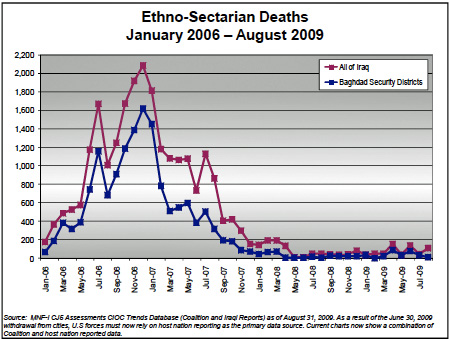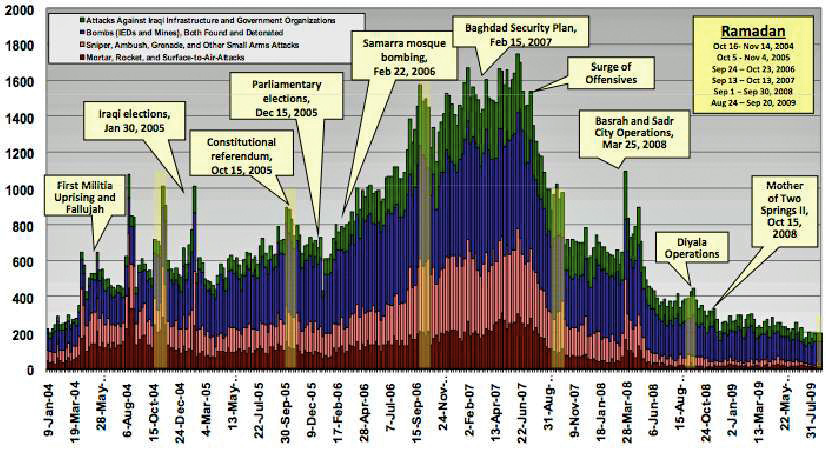
Descent into Civil War (2006-2007)
Ex-Iraqi military and Ba’th party members, Sunni, and Shi'ite extremist militias
Sunni and Shi'ite militias and insurgents
"Death squads"
*“Ethnic cleansing”
*Sunni
Majority of Islamic believers
*Shi’ite
Minority in Islam
Majority in Iraq and Iran
What is her religion?
What is her opinion of Christians?
What is her opinion of Kurds?
What is her opinion of conservative Sunnis and Shi’ites who favor state religion and impose their views on others?
What is her opinion of extremist Sunnis and Shi’ites who use violence in the name of religion?
What evidence does Riverbend provide that the seeds of ethnic and religious civil war are being planted in Iraq by 2003-4?
April 2003-June 2004
L. Paul Bremmer
Appointed June 2004-May 2005
Elections, Jan. 2005
Sunni boycott
Served May 2005-May 2006
Iraq constitution approved, Oct. 2005
Iraqi Parliament Elections, Dec. 2005
Iraq Parliamentary Elections, Dec. 2005
Sunni Arab vote (2/3 turnout)
Negotiations to form government, Dec 2005-May 2006
*Askariya "Golden Domed" shrine bombed, Feb. 2006
Samarra
Holy Shi'ite site
12th Imam
Shi'ite-Kurd coalition government
Sunni Arab parties excluded
*Nouri al-Maliki, Prime Minister
Da’awa Party Allied with Iran and U.S.
Seeds of conflict
Sunni Arabs exclusion and resentment
Ministries are spoils of Shi’ite and Kurdish political parties
Shi’ite Arabs dominate army
Tacit support for Shi’ite militias
Badr Brigade
Karbala
Supreme Council for the Islamic Revolution in Iraq
*Al-Mahdi Army
Baghdad (Sadr City) and Basra
*Moqtada al-Sadr
Health & Education minister
*Ba'athists and other secular loyalists
IEDs (Improvised Explosive Devices)
Mortars, assassinations
Islamic Fundamentalists (al-Qaeda)
Suicide bombings

(Source: CSIS Recent Trends in Iraq War, p. 8)

(Source: Measuring Security and Stability in Iraq, p. 25)
✓Repression breeds political awareness and resentment
Saddam's repression (Saddam was a secular Sunni)
Kurds in 1980s
Shi'ite Arabs in south in 1991
Shi’ite Parties form government in 2006
Sunni Arab boycott of elections and alienation
✓Regime shifts, political instability, weak states
U.S. occupation of Iraq 2003-2011
Various militias formed for self-protection and/or aggression
✓Attacks increase mutual fear and resentment
Revenge killings
✓Special circumstances of rural Arab culture
Vendetta preserves family honor
Sparks setting off vicious cycle:
Bombing of the Askariya "Golden Domed" shrine, Feb. 2006
Shi’ite-Kurd Govt, May 2006